The Chilkoot Trail hike, which begins on tidewater in Alaska and climbs up over mountains in British Columbia, presents a unique backpacking opportunity, as this is a trail rich with history. It was the main trail used in the famous Klondike Gold Rush of the late 1800’s, one of the biggest gold rushes the world has ever seen.
An international crowd of literally tens of thousands, fueled by dreams of riches, used the Chilkoot Trail to chase the gold in the Yukon. Most suffered incredible hardship, many never even made it and only a few got rich. Today on the Chilkoot Trail hike you’ll find plenty of reminders of their epic journey.
The Chilkoot Trail hike as we know it now, opened as a summer trail in the 1960’s. It runs 53 km (33 miles) in the Coast Mountains between Dyea, Alaska and Bennett, British Columbia and as such crosses the Canada/US border at the summit of the trail.
You can hike the Chilkoot Trail in three to six days depending on how much time you’ve got and your current fitness level. Although distances are short, the trail is challenging with sections of mud, rock and even snow in the summer.
For 2024: The Chilkoot Trail hike is open on the Canadian side but it won’t open on the American side until sometime in perhaps 2025. They are doing repair work because of serious flood damage. Check the Parks Canada website for regular updates.
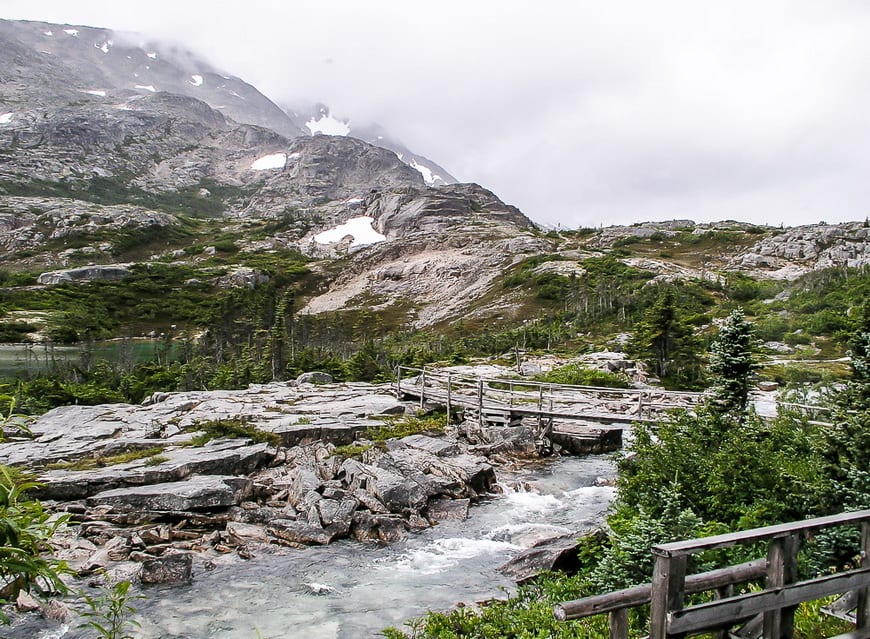
This post includes some affiliate links. If you make a qualifying purchase through one of these links, I will receive a small percentage of the sale at no extra cost to you. Thank you very much for your support.
Campsites need to be pre-booked and proper documentation including passports and visas (depending on your nationality) are required by both countries. There is a limit of 50 hikers per day so prime time should be booked early.
The trail offers magnificent scenery and a fine sense of accomplishment at the finish.
Come prepared for all weather, especially since it covers an area renowned for lots of cold rain and hence the very real possibility of severe hypothermia. Study the bear brochures since both black and grizzly bear sightings are common – although we didn’t so much as see bear scat.
The Chilkoot Trail hike is an impressive endeavour and well worth your consideration.
For those people who come prepared it will be memorable but do not consider this trail if you are excessively fearful of bears or in poor physical shape and in fact go to the section “Should you hike this trail?” and answer the questions on whether you should be attempting the trail at all.
Highlights of the Chilkoot Trail hike
- A great adventure
- Fantastic scenery and beautiful lakes
- An international trail with the boundary at the summit of the pass
- Klondike history and artifacts
- Several very peaceful and picturesque campsites
- The possibility of a historic train ride on the White Pass and Yukon Route down to Skagway from Bennett. (More information on the train out of Bennett here.)
- Great trail camaraderie
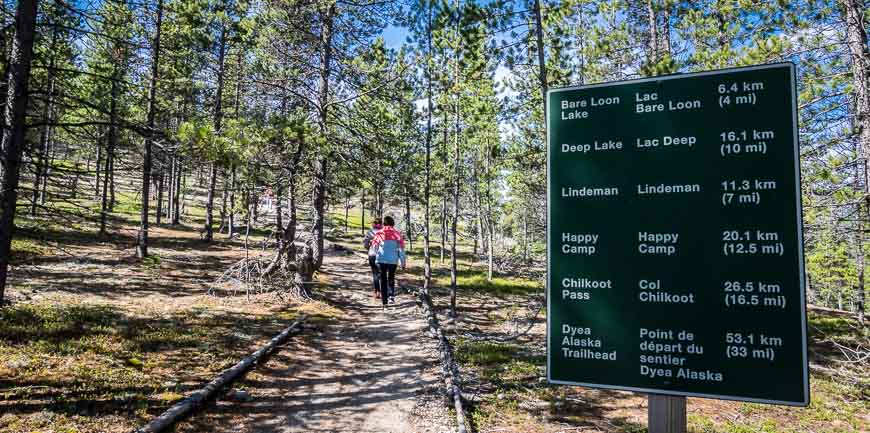
Should you hike the Chilkoot Trail?
Only you can answer the question. There are MANY factors to think about before you commit to signing up. Go through the list below and think about the answers. Maybe you need to reconsider this trail in a few years time after you have gained the necessary experience. It is a serious undertaking!!
Most importantly have you hiked and camped before?
If you are a great day hiker but you have never slept in a tent, then this is not where you should begin your camping experience. Conditions can become uncomfortable very quickly.
Temperatures can hover in the hypothermia range (average summer temperature is 14°C/57°F) for days at a time, especially early and late in the season and if you haven’t spent long nights in a cramped tent before you might find the situation uncomfortable.
How well do you deal with rain and mud? There are no weather guarantees on this trail and if you are very unlucky with your timing you could have 3 to 5 days of rain in a row.
Do you have any joint or back problems? Do not kid yourself that they are manageable because as the days roll along additional strain is going to be severely placed on knees, feet, shoulders and your back.
If you are considering doing this as a family are your children older than 12?
Children six and younger are not permitted on the trail and it really is not recommended for children younger than 12. Realistically assess your child’s capabilities especially as it relates to physical and mental stamina.
Are you okay with using outhouses and forgoing hot showers?
Are you prepared to deal with the very real possibility of bumping into a bear?
Do you like the people in your proposed group and how do you think the group dynamics will play out over the planned journey? Will there be sharing of tent setup and cooking duties? Do people move at similar speeds? Do you have the same goals? Are you on the same wavelength for starting times each day? How well do you communicate?
What happens if you are delayed one or two days for whatever reason? How flexible are your plans?
If at all possible, leave an extra day at the end to allow more time if needed on the trail so you don’t have to rush – particularly if you are finding it harder going than expected.
There are steep scrambles….remember the classic pictures of single file Klondikers heading up the steep hill. Well, that wasn’t the top of it.

Suggested itinerary for the Chilkoot Trail hike
Option 1 – Beginning in Whitehorse, Yukon Territory, Canada – 6 days and 5 nights
Day 1 – Arrive in Whitehorse and transfer to your hotel. Explore the city and finish shopping and packing for your Chilkoot Trail trip. Be cognizant of what food products you can and can’t take across the American border. (Don’t take meat across the border!)
Day 2 – Transfer to Skagway by bus (or rental car) via the beautiful and scenic White Pass. Participate in the noon orientation, get a lift to the trailhead, and then head to the first campsite, Finnegan’s Point, 7.9 km (4.9 miles) away.
Day 3 – Continue to Sheep Camp at 20.9 km (12 miles) to complete your second day of hiking. You’ll pass through Canyon City, a former village and freight transfer station of 1,500 people with at least 24 businesses. Look for relics. You’ll find rangers and a lot of campers at Sheep Camp, the busiest spot on the trail.
Day 4 – The hike from Sheep Camp to Happy Camp over the Chilkoot Pass is the most strenuous day of the trip. Start early and hike 5 km (3 miles) and 850m (2700 feet) up on tough trails to reach the pass and the Canada – US border ranger hut. Continue down to Happy Camp at 33 km (mile 20.5) where the landscape of the trail changes dramatically. It will take some people 12 hours to complete this section of the trail. If you have energy to burn, continue to the much less crowded and very scenic Deep Lake Camp at km 37 (mile 23).
Day 5 – Hike from Happy Camp to Bare Loon Lake Camp. You’ll travel by some pretty lake scenery and if you don’t mind the cold you could try a bracing swim in Bare Loon Lake. Total distance is 8.5 mi/13.7 km.
Day 6 – Finish your hike today by walking to Bennett, 4 mil/6.4 km away. From there take either a prearranged float plane or take the train to Carcross in the Yukon or Skagway, Alaska and return by bus to Whitehorse the following day.
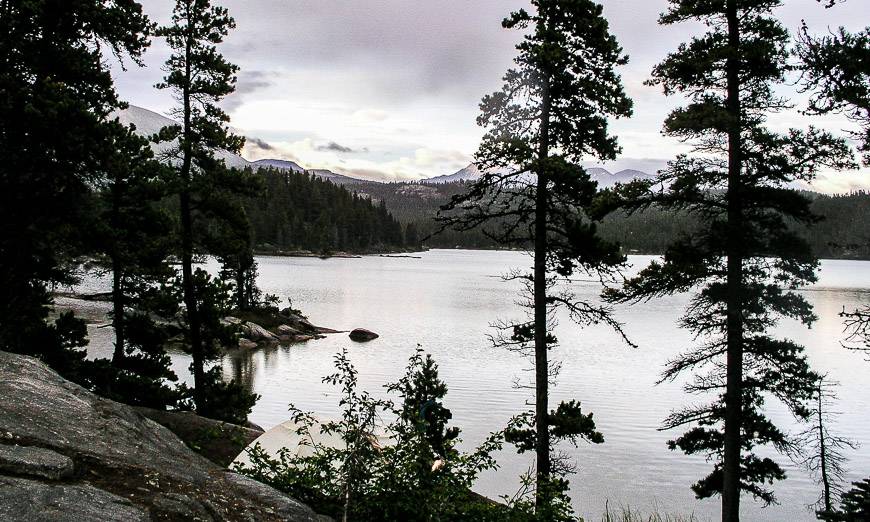
Option 2 – Beginning in Skagway, Alaska – 6 days, 5 nights
Day 1 – Enjoy the day in Skagway and check in with the National Parks people for your orientation at noon. Overnight at a B&B in Skagway or camp near the trailhead at Dyea.
Day 2 – Hike to Canyon City, 12.5 km (7.8 miles) away. The first 5 miles are surprisingly rough with lots of twisted roots, trees, mud, and boulders to deal with. It gets easier after Finnegan’s Point.
Day 3 – It’s a more leisurely 5 mile/8.4km hike to Sheep Camp. You will have time to explore the ruins of Canyon City.
Day 4 – This is the big day where you’ll hike the “Golden Stairs’ to reach Chilkoot Pass. It will be a 2,700-foot climb with packs to reach the summit. After warming up in the border hut, drop down, perhaps on snow, to Happy Camp and along the way enjoy superb alpine scenery. The total mileage is 7.5 miles/12 km.
Day 5 – Descend through alpine tundra to Bare Loon Lake, 8.5 miles/14 km away. Take time to pick the abundant blueberries.
Day 6 – Today is a short 4 mile/6.5km hike to Bennett. Rendezvous with the White Pass Yukon Route railway and return to Skagway. The train ride is roughly 3 hours long.
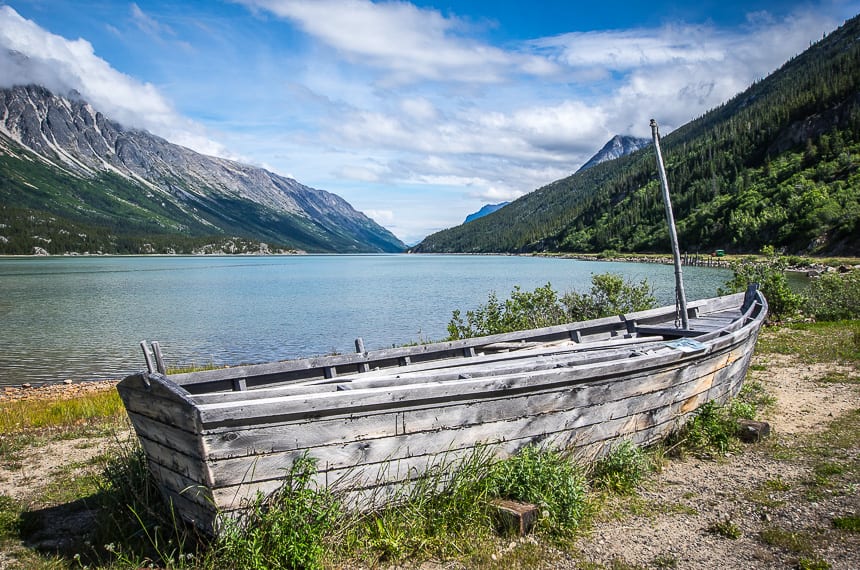
How to make a reservation for the Chilkoot Trail
The summer hiking season is from June 1 – September 13th. Between September 14 and October 31 and also between April 15 and May 31, fees are waived, but all campers on the Chilkoot Trail must register for use of campsites along the trail.
For reservations for the upcoming season visit the Parks Canada website. They don’t have a date for accepting reservations in 2023 yet.
It costs money to do the Chilkoot Trail hike.
- Full Chilkoot Trail permit (for US and Canada) $68.10/adult, $34.15/youth.
- US Only permit – $27.80/adult, $13.90/youth
- Canada only permit – $40.50/adult, $20.25/youth
- Reservation per hiking group – $11.50
- Canadian day permit per person – $11.75
- Bennett camping permit per person per night – $12.75
To reserve a place on the Chilkoot Trail call Monday to Friday, 9 AM – 4 PM PST.
- 1-800-661-0486 Canada and U.S.
- 1-867-667-3910 local and overseas
Visit the Skagway Trail Center at 520 Broadway in Skagway, usually from 8:30 AM – 4:30 PM. It is here you pick up reserved permits, get weather reports and news about the trail conditions. It’s also where you must watch the video – Staying Safe in Bear Country.
You can pick up reserved permits, either the day before or on the day you start the Chilkoot Trail hike. You need to have the proper documentation and all hikers need to be there in person.
There are walk-in permits available on a first come, first served basis – on the day before or even the day you want to start the hike. The eight permits are available beginning at 1 PM the day before you start. The last option is to get a permit for a same day start and these are only available if there are no shows beginning at 1 PM. (In 2023 I’m not sure if this is true.)
For all Chilkoot Trail reservations you must have the following ready:
- Know which campground you will camp at each night of your trip (to ensure everyone has a place to camp and to prevent overcrowding)
- Have an alternative itinerary in case you can’t get everything you want
- If you plan to exit via the train, make sure your exit day corresponds to the train schedule. If not, figure out how you are leaving Bennett. (You can also fly out.)
- You will need a credit card to make the reservation. You’ll have to pay all fees at the time you make the reservation. Reservation fees are non-refundable.
- Reserve Monday to Friday from 8 AM to 4 PM PST.
There is a quota of 50 hikers per day that are permitted to enter Canada over the Chilkoot Pass. If you are making a booking for a group keep in mind that the maximum number of hikers allowed in the group is 12.
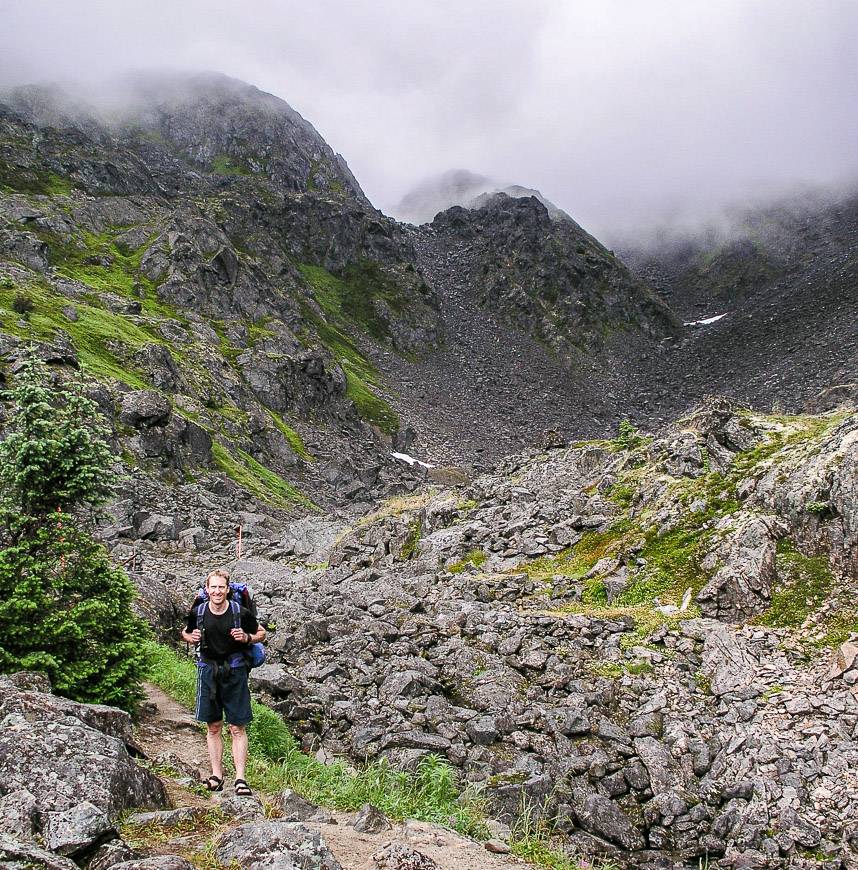
Campsites on the Chilkoot Trail hike
The campsites in order from Dyea, Alaska to Bennett, British Columbia are as follows:
- Finnegan’s Point km 7.9/mile 4.9
- Canyon City km 12.5/mile 7.8
- Pleasant Camp km 6.9/mile 10.5
- Sheep Camp km 20.3/mile 12.6 (very busy since it’s the camp before the climb to the pass)
- Happy Camp km 33/mile 20.5 (also busy since it’s the closest campsite after the pass)
- Deep Lake km 37/mile23
- Lindeman City km 41.8/ mile 26
- Bare Loon Lake km 46.7/mile 29
- Bennett km 53.1/mile 33
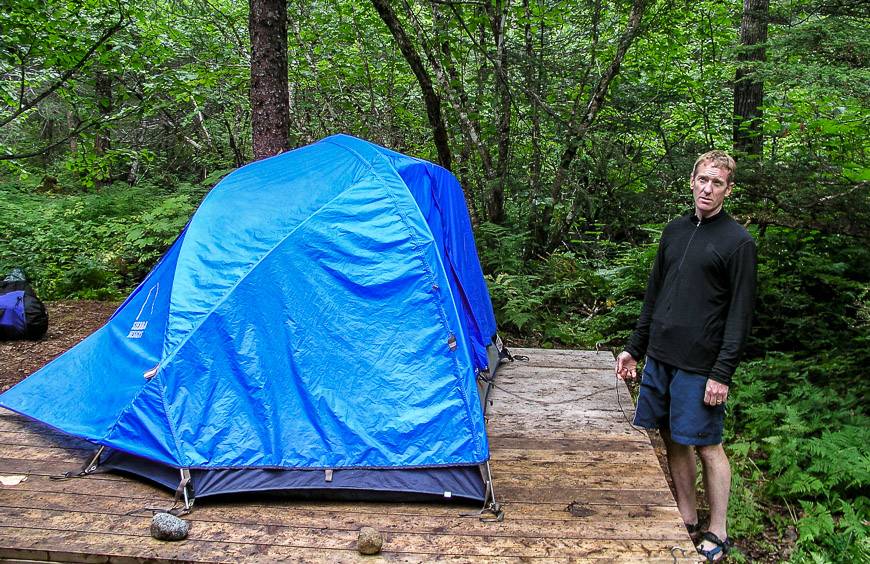
Once you have your permit there are a few practical items you should know.
- Do not take away any of the historic or cultural resources while on the Chilkoot Trail hike.
- Do not feed the wildlife. Keep food away from your tents.
- No campfires are permitted.
- Always keep pets on a leash. Visit Hiking with Dogs – for pointers specific to the Chilkoot Trail.
- Pack out all garbage and food waste.

Getting to Whitehorse in the Yukon Territory
You don’t have a lot of options when it comes to getting to Whitehorse. You can either fly in or drive – though Whitehorse is a long way from anywhere.
By Air
You have a choice of three airlines – Air North, Air Canada and WestJet.
By road
You will have to plan on a multi-day drive if you’re coming from any of Canada’s cities. Edmonton is the closest large city, and it is nearly 2,000 km (1,243 miles) away. The Alaska Highway is paved with regular services but don’t expect fancy hotels and lattes along the way.
Spare tires should be properly inflated, and it would be worthwhile to have you car serviced before the trip. You’ll be looking at more expensive gas the further north you go to.
Expect to see bear, moose, and caribou along the side of the road. There are lots of lakes where you can get out fishing but don’t forget to get a fishing license. Campsites are plentiful.

Where to stay in Whitehorse
Whitehorse is a northern Canadian city and although it has numerous hotels and motels, few are of the same caliber that you’re probably accustomed to staying in. The one exception is the Inn on the Lake.
Check out the following possibilities.
The Northern Lights Resort & Spa is 18 km from the city centre but is has an outdoor hot tub and there is a daily breakfast.
Inn on the Lake is a 4.5-star hotel, 35 minutes outside of Whitehorse. This is the type of spot to enjoy for a few days before or after your hike if you can fit it in your budget.
Skky Hotel – This is the only boutique type hotel in Whitehorse and probably a welcome change from some of the other hotels in the city.
Getting to Skagway
By Air
You can’t fly directly to Skagway. Instead, you must fly to Juneau or Anchorage from Seattle and then get a connecting flight to Skagway. Check out Air Excursions.
By Sea
The northern terminus of the Alaska marine highway system, which begins in Bellingham, WA is Skagway. You can get the full schedule and all fare information on the Alaska Marine Highway website. You have the choice of free camping on deck or stateroom accommodation. The trip takes about 2.5 days and will run you about $US050 one way as a walk on passenger.
By Land
Skagway is easily accessed by car or bus from Whitehorse by taking the South Klondike Highway. It’s a good road with great scenery. Just 30 miles south of Whitehorse is the historic community of Carcross where you can load up on food and gas. In total it’s about a two-hour drive between the two towns. Rental cars are available in Whitehorse through Budget and National.
There is also a company that will drive you from Whitehorse to Dyea – the starting point called Who What Where Tours.
The other option is to hop on the bus in Whitehorse to reach Skagway.
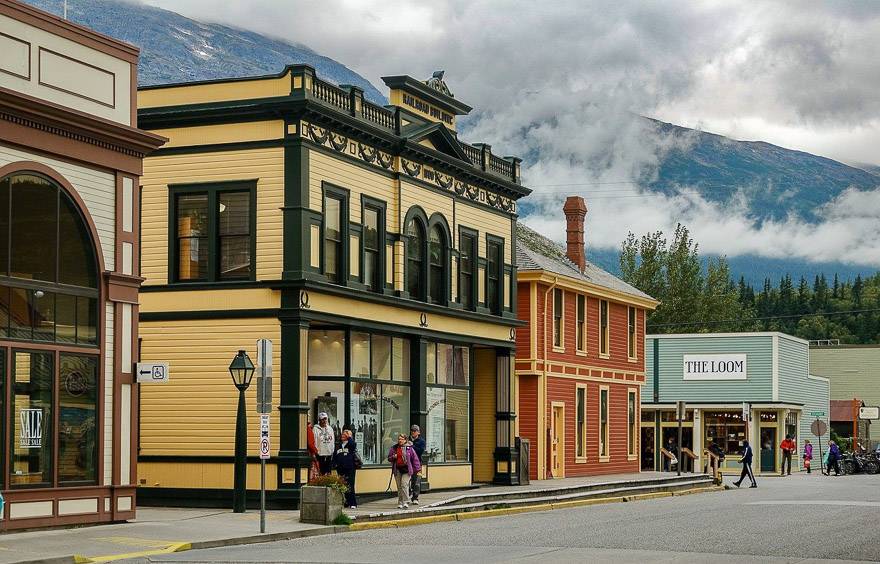
The White Pass and Yukon Route Railway
The 110-mile narrow gauge railway was built in 1898 during the Klondike Gold Rush and is today an International Historic Civil Engineering Landmark. In just 26 months the railway was built using tens of thousands of men and 450 tons of explosives under extremely harsh conditions.
Today it operates from early May until late September. The best combination if you’re actually planning to backpack is to book the bus/train combination. It will take you from Whitehorse by bus to Carcross and there you’ll board the train for Skagway. Book the train – bus here.
Be very careful that you’re operating on the correct time zone as there is a one-hour difference between Yukon and Alaska!
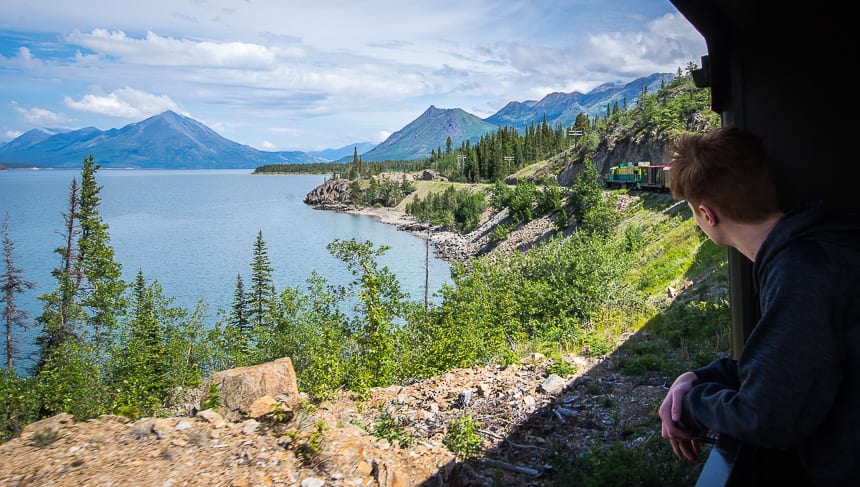
Where to stay in Skagway
Skagway is a town of only about 1,000 fulltime residents though it is a popular spot for cruise ships.
You won’t find the same class of hotel or accommodation in general as you might find in a larger center. The B&B’s probably offer better value for your dollar plus you’ll get an insider’s perspective of the area too.
Check out the historic Skagway Inn with an onsite restaurant.
Chilkoot Trail Outpost is conveniently located just half a mile from the start of the Chilkoot Trail hike and 7 miles from Skagway. They also have a storage area for vehicles and gear if you are going to return to Skagway at the end of the hike.
The White House on Eighth Avenue is in a historic home registered on National Historic Places.
Border crossing between United States and Canada
Make sure you know before you go what documentation is required. At a minimum you will need a passport but perhaps a visa, depending on what your nationality is, and if there are children involved then a birth certificate and a notarized letter if one parent is absent.
Chilkoot Trail warning
The short distance on the Chilkoot Trail hike belies the fact that it can be an extremely difficult, slow going, and treacherous adventure.
You will encounter mud and slippery twisted roots, especially on the first day, unstable boulders and even snow, especially around the pass. In fact, avalanche danger is a threat until early July.
The climb to the pass, referred to as “The Scales” is a route over enormous boulders marked by white poles which in inclement weather can be difficult to see.
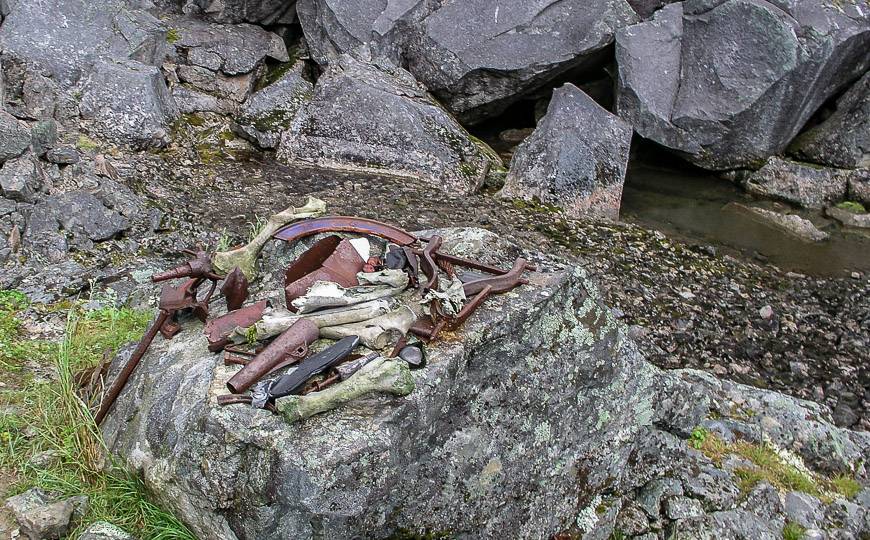
Getting to the Dyea trailhead
The Dyea trailhead is only 10 miles (16 km) from Skagway via an all-weather dirt road. You can easily find a private shuttle in Skagway.
Drivers are on the prowl for business and will be in the vicinity of the ranger cabin where you have your briefing. Drivers vary from season to season, but you will have no trouble getting to the Chilkoot Trail trailhead for a reasonable sum. There is also overnight camping just half a mile from the trailhead.
Description of the Chilkoot Trail hike
The first few days on the Alaskan section of the trail take you through forests, along rivers, through mud, over roots with intermittent views of hanging glaciers. There is not a lot of elevation either gained or lost until you climb to the pass. The scenery is pleasant but not spectacular – yet.

The climb from Sheep Camp to Chilkoot Pass is beautiful and obviously the higher you go the better it gets. This is a tough section to hike as it’s over large boulders so footing can be precarious at times, especially when you’re weighted down with a pack.
Snow may greet you at the summit, of the Chilkoot Trail hike even in August, so be prepared for a little sliding to get down to the dirt trail.
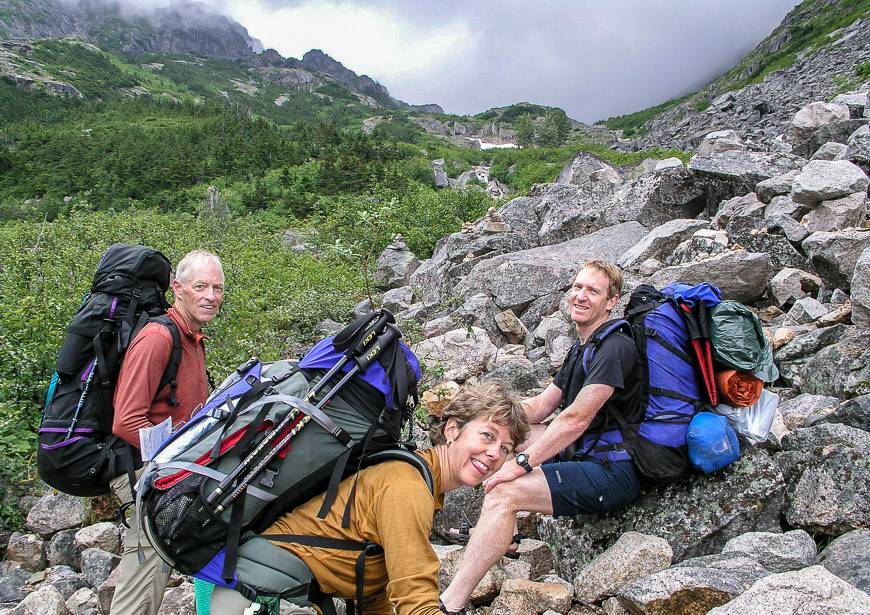
There is a dramatic change in the scenery on the Canadian side of the pass. Look for stunted trees and tundra vegetation.
There are numerous lakes, small falls and lovely campsites. As you get close to Bennett it flattens out again but there are still mountainous vistas to enjoy.
The entire Chilkoot Trail hike is well marked and obvious with one exception. When you climb towards the pass conditions can be poor and visibility low. There are white markers, but you may have to look hard to see them on occasion.
At the end of the season this part of the trail is not maintained by the rangers.
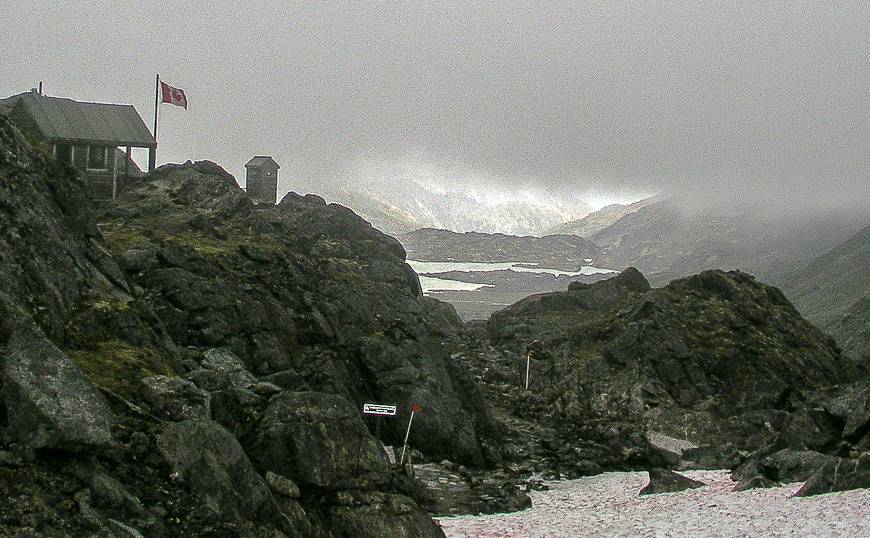
Options to finish the Chilkoot Trail hike
Bennett doesn’t offer road access, phone or cell service. To leave the Chilkoot Trail you can either take the train to Carcross, Fraser or Skagway or a floatplane to Whitehorse. Alpine Aviation out of Whitehorse offers two choices – a pick up with a 30 minute flying time to Whitehorse or a one hour glacier tour with part of the flight over the Chilkoot Trail.
Other airlines to contact include Alkan Air (1-867-668-2107), Amber Airways(1-867-334-3535), and Tintina Air (1-867-332-8468)
You’ll have to make all travel arrangements ahead of time.
Unfortunately, you are no longer able to hike out to the highway along the railroad unless you want to incur fines.
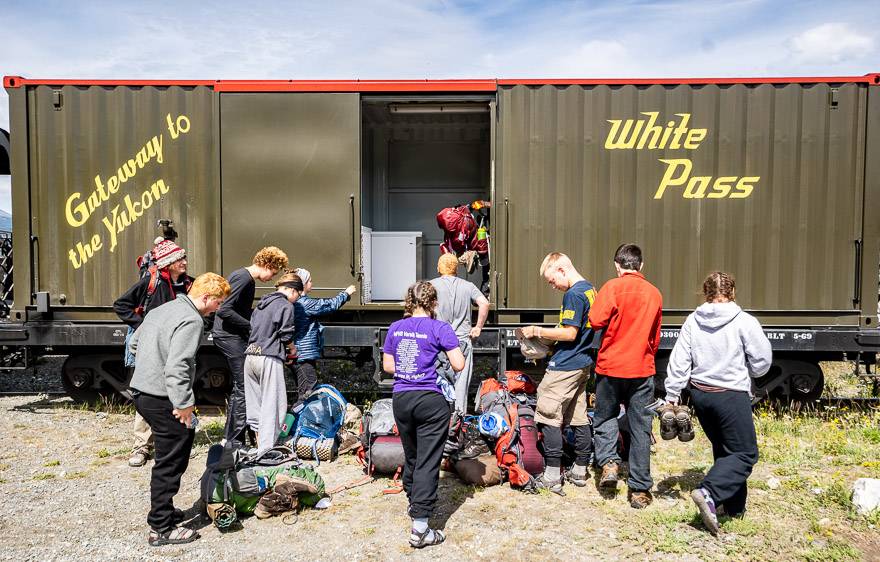
Bennett, British Columbia – the last stop on the trail
Bennett is the last stop on the Chilkoot Trail. It is an abandoned town now but during the Klondike Gold Rush it was a vibrant place.
This is the spot where the gold prospectors would pack up their supplies and then either build or buy a raft to take them down the Yukon River to the gold fields around Dawson.

Packing list for the Chilkoot Trail hike
The weight of your pack will directly influence your enjoyment of the Chilkoot Trail hike. Keep everything to a minimum but also be sure to include everything that is on the ‘DO NOT LEAVE HOME’ without list. I highly recommend trying all your equipment beforehand. In fact, don’t even think of starting out if you don’t know how to put up your tent or use your stove… There should be no surprises on your first night out.
Note that your pack should weigh no more than 30-35% of your body weight.
- Backpack + rain cover
- Tent + waterproof fly
- Stove + LOTS of fuel (you can’t fly with fuel), waterproof matches and 2 lighters
- Sleeping bag (packed in plastic or waterproof bags) and sleeping pad
- Lightweight pot/pan/coffee filter
- Plate/bowl/cutlery/mug/sharp knife
- 1 – 2 one litre water bottles
- Water filter or purification tablets
- Biodegradable soap and a quick dry towel
- Well broken in hiking boots and gaiters and 2 – 4 pairs of hiking socks
- Camp shoes or sandals
- Quick dry pants – best if zip off to shorts
- Long underwear/warm hat/mitts plus 1 – 2 quick dry long sleeved shirts and one quick dry short sleeved t-shirt
- 3 – 6 pairs quick dry underwear
- Full rain gear – top/bottom and hat
- Windproof fleece jacket
- Headlamp with extra batteries, sunscreen, chapstick, sunhat
- Extra Ziploc bags and toilet paper
- Travel size toiletries, personal medications
- Waterproof map + permits + passport and visa + money in a waterproof bag
- Food for the number of days on the trail + 1 emergency day
- 25 feet of rope to hang food, a carabiner and a waterproof bag to hang your food
- Sunglasses, reading glasses, extra contacts
- First aid kit with lots of bandages, moleskin or Compeed (my fave), Advil, Benadryl, antibiotic ointment, tensor bandage, antiseptic wipes, splint, roll of gauze, gloves
- Bear spray – buy in Whitehorse or Skagway
- Camera and cellphone
- Hiking poles and microspikes
- Reading – writing material
- Gear aid tenacious tape for repairs on the fly
- Insect repellent and head net
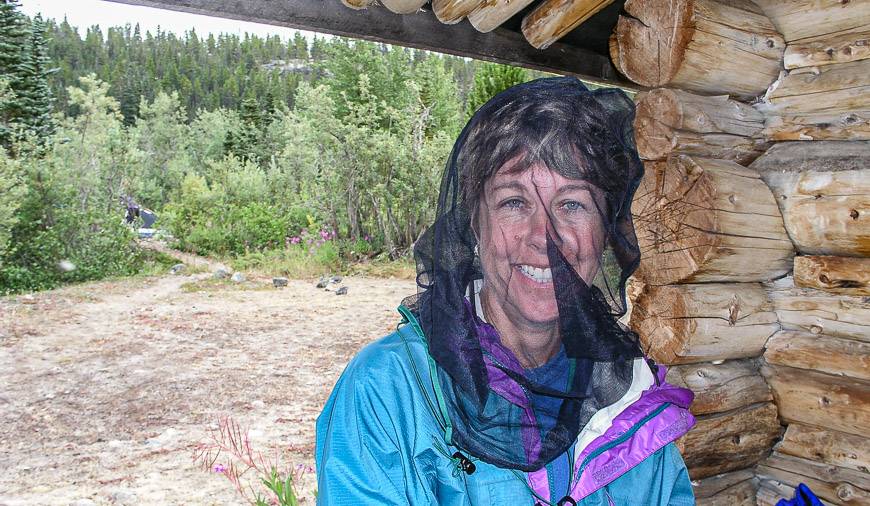
Meal suggestions for the Chilkoot Trail hike
Some hikers eat only to replenish energy reserves while others look forward to a well planned meal that can give you a real mental boost after a tough day. If you are with a group it would be helpful if you were all thinking along the same lines so discuss food issues and meal preparation before you go.
I have found it to be helpful on my many backpacking trips to plan breakfast and dinners as a group and let everyone fend for themselves for lunch and snacks. Obviously if there are only two of you there is no need for both of you to bring peanut butter (as an example) so use a good dose of common sense.
Here are some meal suggestions that have worked well for me. I also suggest a trip to your local Mountain Equipment Co-op, REI or camping store or the convenience section of your grocery store for some lightweight meals if you are not inclined to put much energy into this part of the trip. Take extra food for at least one day in case of an emergency.
Breakfast
This is usually a quick so you can get moving. Caffeine seems to be important for most people so get water boiling as soon as you get up. Coffee, tea, hot chocolate and powdered milk are good staples. Buy a lightweight coffee filter that takes up almost no room and makes one cup at a time. It’s easier if everyone has their own. Try instant porridge with added nuts or granola and skim milk powder.
Lunch and snacks
Carrot sticks, broccoli florets and celery sticks for good for the first day or two. Make GORP (good old raisins and peanuts) or buy premade and add chocolate bits and extra dried fruit. Bring lots, a minimum of ½ c. per day.
Take tortillas and spread with peanut/almond butter and jam. Just roll up and allow 1-2/day per person. Tortillas with hard cheese (keeps for much longer unrefrigerated) and pepperoni/salami is also a good one. Beef or turkey jerky is an excellent choice too.
Take dried fruit such like pears, peaches, prunes, cranberries, mango, ….
Bring an assortment of energy bars so you don’t get sick of them. Allow one per day. Cookies are good too, especially ones that don’t break easily like Fig Newtons.
Candy is a good one for sharing. Take hard candies to suck on, licorice, gummi bears, jellybeans, and yogurt covered raisins or nuts, chocolate bars or one of your favourites.
- Macaroni and cheese
- Falafels (buy a dried mix and add water) fry and throw in pita bread or tortillas with hot sauce, hummus from a mix
- Pesto (in a tube or dried) and pasta with extra parmesan cheese (+ add cut up sundried tomatoes)
- Thai noodle dish – premade form the grocery store
- Chickpea curry and rice – buy premade
- Tortillas with refried beans (reconstituted) and rice + hot sauce
- Pasta with a sundried tomato sauce – buy a packaged sauce and add dehydrated mushrooms and sundried tomatoes
- Soup and tortillas with melted cheese
In planning your meals insure that you have enough calories, you are taking foods that you like to eat and that the weight is minimized – dehydrated instead of fresh whenever possible. Reduce packaging before you leave. Pack the plastics out. Practice Leave no Trace principles.
Safety tips for the Chilkoot Trail hike
Keep all food, toiletries and garbage in the metal bear proof boxes or hang your food. Do not cook or eat near your tent.
Go upstream from any bathing or washing for your drinking water and filter it.
Use the outhouses wherever possible. Otherwise dig a 6-inch hole and bury your waste. Pack out or burn the toilet paper.
Arrive in camp before nightfall – which shouldn’t be hard with long days in the summer.
If you start to get a blister, stop immediately and attend to it before it becomes a bigger problem.

Bear encounters on the Chilkoot Trail hike
Encounters with black and grizzly bears are a distinct possibility on the Chilkoot Trail. Make a lot of noise when you are on the trail. Bears can become a problem when they are surprised or if you are unlucky enough to come between the mother and her cubs.
Carry easy to access bear spray – and know how to use it.
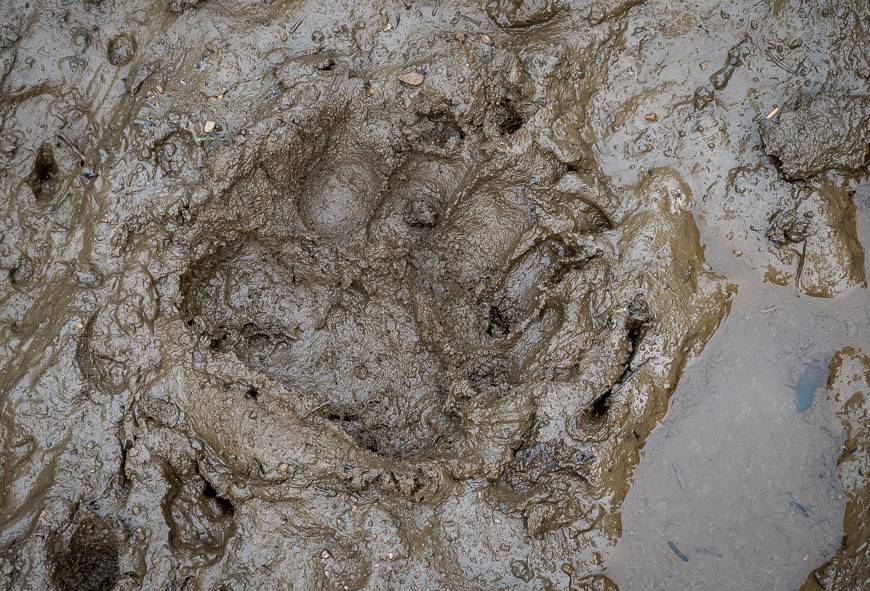
Costs to hike the Chilkoot Trail
The location of the Chilkoot Trail makes it inherently more expensive to access than most.
Budget for the following in addition to all the permits you need.
- Transportation to Skagway – You’ll probably fly into Juneau, Alaska or Whitehorse, Yukon Territory. You could also check out the Alaska State Ferry. There are plane connections from Juneau to Skagway and there is a regular scheduled bus service from Whitehorse to Skagway. You can also rent a car in Whitehorse.
- Transfer from Skagway to the Chilkoot Trail trailhead at Dyea via taxi.
- Return transportation to Skagway or Whitehorse.
- Accommodation pre and post trip
- Food and a celebratory meal
- Miscellaneous camping equipment
Tour Companies on the Chilkoot Trail hike
If you’re short on trip planning time or have never undertaken such an adventure then consider one of the following companies.
Click on the photo to bookmark to your Pinterest boards.



